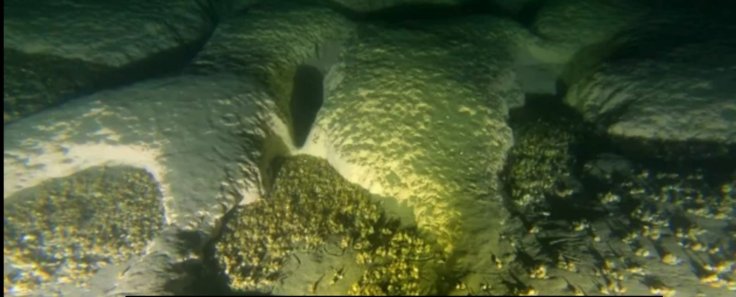A stunning discovery has emerged beneath the waters of Lake Michigan, raising questions that scientists are eager to answer. Recently, dozens of massive sinkholes, each about 600 feet wide, were detected nearly 500 feet below the lake's surface. The origin of these sinkholes remains a mystery, leaving researchers puzzled.

The Wisconsin Shipwreck Coast National Marine Sanctuary first identified these anomalies in 2022 through sonar technology. Now, two years later, they finally have an explanation for these circles. Researchers say that these circles are nothing but giant holes.
In September 2024, a team conducted a new remote expedition to investigate the area, located 14 miles southeast of Sheboygan, Wisconsin. This discovery has sparked curiosity among scientists and geologists, who are eager to uncover the reasons behind these unusual formations.
Russ Green, a maritime archaeologist and superintendent of the Wisconsin Shipwreck Coast National Marine Sanctuary, shared his findings with Live Science. He reported that they noticed circular depressions on the map, initially suspected to be natural formations. However, their true nature was uncertain.
Brendon Baillod, a local shipwreck hunter, also detected these circles. He estimated that the craters measured between 20 and 40 feet deep. "There were dozens of them in our search grid," Baillod told Live Science. His observations further fueled the intrigue surrounding these underwater formations.
Not everyone is convinced that these underwater features are sinkholes. Baillod believes they might be something else. "I think they might be more accurately called craters." He proposed that the phenomena could be caused by gas or water upwelling toward the surface, rather than the typical collapse associated with sinkholes.
To investigate further, the team reached out to scientists from the National Oceanic and Atmospheric Administration's (NOAA) Great Lakes Environmental Research Laboratory (GLERL). In a joint mission, scientists examined the mysterious circles on the lakebed.
A remotely operated vehicle (ROV) was deployed to capture detailed footage of the underwater landscape. The ROV confirmed the presence of enormous, naturally occurring craters. "We saw around 40 of them, but there may be more," said Steve Ruberg, a researcher at GLERL, in an interview with the Milwaukee Journal Sentinel.
Kevin Cullen, Director of the Wisconsin Maritime Museum, expressed his excitement about the mystery. "There's now a geological question in mind. How did they form? Why are they there, specifically in the bedrock?" Cullen told TMJ4 News. While a large portion of Lake Michigan's floor remains unexplored, he pointed out that only about 10 to 15% has been studied, leaving room for many unknowns.
Cullen speculated that glaciers might have played a role in the formation of these sinkholes centuries ago. He suggested a potential link between the sinkholes and the gorges formed during the Ice Age. However, there is still much more to learn before drawing any conclusions.
As of now, no water has been found escaping from the holes. This means there is groundwater circulating beneath the lakebed. Ruberg still expects researchers will eventually detect some.
Similar geological formations have been found in nearby Lake Huron, which has experienced comparable underwater sinkholes. Further research in both lakes could provide valuable insights into these enigmatic formations.
Scientists are keen to continue their exploration, as this discovery presents an opportunity to better understand the geology beneath the Great Lakes. The bedrock of Lake Michigan is still largely uncharted, and each new discovery brings the potential to unlock more secrets about its formation and history.
Cullen remains optimistic about the future of this research. "That's the beauty of storytelling, the beauty of scientific inquiry," he said. "There's always new stones to be uncovered." As more studies are planned, researchers hope to shed light on these strange underwater features and solve the mystery of how they came to be.
For now, the sinkholes under Lake Michigan remain a captivating puzzle, drawing attention from geologists, marine enthusiasts, and the general public. As scientists continue to explore the lake's depths, many are hopeful that answers will emerge, offering a better understanding of one of North America's largest and most mysterious bodies of water.









